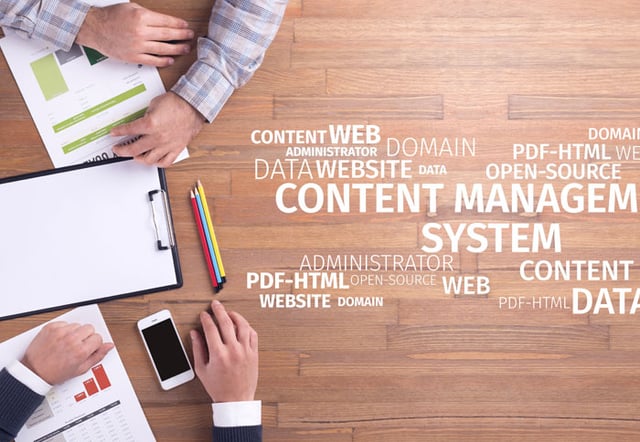
Making a website can be a complicated and laborious task if you do not have the right tools. In the past there were essential tools that allow publishers to generate a page, which evolved to incorporate the control of the structure of the Web and other features, but generally were focused more on building and maintenance. In recent years with the development of Content management system, you do not require that many tools and it will let you create and maintain a website with ease, taking care of the most tedious task of the web administrators.
Given the cost savings of using these tools, and the cost of developing them, one would expect that the price was too high. That's true for some commercial products, but there is powerful content management tools open access, available with open source licenses.
The content management systems provide an environment that enables the updating, maintenance and expansion of the website with the collaboration of multiple users. In any virtual environment this is an important feature, which can also help create a more cohesive community participate together.
What is a content management system?
The content management system (CMS) is software that is used primarily to facilitate the management of websites, whether on the Internet or an intranet, and so is also known as web content management systems (Web Content Management or WCM). Keep in mind, however, that application of the CMS is not limited to the web.
James Robertson (2003) proposes a division of the functionality of the content management systems into four categories: content creation, content management, publication and presentation.
Content Creation
A CMS provides tools for creators without expertise in web pages can concentrate on the content. The most common is to provide a WYSIWYG text editor, in which the user sees the end result as you type in the style of commercial publishers, but with a range of limited text formats. This limitation makes sense; since the aim is that the creator may emphasize some points, but does not change much the overall style of the website.
There are other tools as editing XML documents, use of office applications that integrates with the CMS, importing existing documents and for adding publisher’s marks, usually HTML, to indicate the format and structure of a document.
A CMS can incorporate one or more of these tools, but should always provide a WYSIWYG editor for ease of use and ease of access from any computer with a browser and Internet access.
For the creation of the site itself, the CMS provide tools to define the structure, page layout, visual appearance, usage patterns, and a modular system that allows you to include features not originally anticipated.
Content Management
Documents created are stored in a central database where they also keep the rest of Web data, such as data relating to documents (versions made, author, publication date and expiration, etc.), Data and preferences users, the structure of the web, etc.
The structure of the site can be configured with a tool that usually presents a hierarchical view of the site and allows modifications. This structure can assign a group to each area, with managers, editors, authors and users with different permissions. That is essential to facilitate the duty cycle (workflow) with a circuit that will issue from the author to the head end of the publication. The CMS allows communication between group members and tracks the status of each step of the cycle.
Publication
A page is automatically published approved when the date of publication, and when it expires is archived for future reference. In its publication applies the pattern defined for the entire site or specific section where it is located, so that the end result is a website with a consistent look on all pages. This separation between content and form permits you to modify the visual appearance of a website without affecting documents already created and released to the authors of worrying about the final design of its pages.
Presentation
A CMS can automatically manage the accessibility of the web, to support international standards and WAI accessibility, and adapt to the preferences and needs of each user. It can also provide compatibility with different browsers available on all platforms (Windows, Linux, Mac, Palm, etc.) And its ability to adapt to internationalization allows language, culture and measurement system of the visitor.
The system manages many aspects such as navigation menus or the hierarchy of the current page within the site, adding links automatically. It also manages all modules, internal or external, to incorporate the system. For example, a news module was presented the news appeared on another site, with an advertising module would show an ad or animated message, and a forum module could be displayed on the home page, the title of the last messages received. All this is presented with the appropriate links and of course, following the pattern that designers have created.
The need for a CMS
In the previous section we have presented reasons enough to see the usefulness of a system to manage a web environment, but you might think that there is no need for a relatively small site or when not needed as much functionality. That could only be true for a website with a few static pages for not providing for future growth and many updates, so it is not very realistic. Otherwise, the flexibility and scalability that allow these systems justify their use in virtually any type of web.
Many home users use free CMS to develop and manage their personal websites, dynamic websites getting full functionality. The result is superior to that obtained from some companies that simply have static pages that do not add value.
Here are some of the highlights that make it useful and necessary to use a CMS:
1) Inclusion of new features on the site: This may involve changes to many pages and code generation that provides the functionality. With a CMS that can be as simple as including a module made by third parties, without incurring a lot of changes on the web. The system can grow and adapt to future needs.
2) Maintenance of large numbers of pages:In a site with many pages need a system to distribute the work of creation, editing and maintenance access permissions to different areas. Also have to manage the metadata of each document, versions, publication and expiration pages and broken links, among others.
3) Reusing objects or components: A CMS allows recovery and reuse of pages, documents, and generally anything posted or stored.
4) Interactive pages: Static pages reach the user exactly as stored on the web server. However, there are dynamic pages in the server as received in browsers, but are generated according to requests from users. Thus for example when using a search engine, the system generates a page with results that did not exist before the request. To achieve this interaction, the CMS connect to a database that makes central repository of all data from the web.
5) Changes in the appearance of the web: If there is a good separation between content and presentation, a design change may involve the review of many pages for adaptation. The CMS facilitate changes to the use, for example, the standard CSS (Cascading Style Sheets or cascading style sheets) thus achieves independence and Content.
6) Consistency of the web: Consistency in the web does not mean that all pages are equal, but there is an order (visual) rather than chaos. A user immediately notice when a page is not like the rest of the web on the same appearance, the layout of objects or changes in the way you ride. These differences cause sense of disorder and suggest that they have not designed web professionals. The CMS can apply the same style on all pages with CSS mentioned, and apply the same structure by patterns of pages.
7) Access control: Controlling access to web is not simply to allow entry to the site, but also implies managing different permissions to each web area applied to groups or individuals.






